![[object Object]](https://admin.thus.ph/uploads/destimations_min_00fdc4e6a1.jpg)
In Case You're Wandering, These Are the Destinations Frequently Recommended For Women Who Travel Alone
Safe doesn't mean boring for these 10 destinations.

Kendrick Sy Go
2024-03-25T23:16:06.000Z
This is a list of the countries often recommended for women who want to travel alone—and each of them have traits that may discourage visitors.
Iceland is an adequate example. For years, this chill, Nordic getaway has been a consistent presence in lists ranking preferred destinations and it continues to hold this spot by being generally considered both stunning and safe. Nevertheless, it is also known for its downsides. Chief among them is the country’s high cost of living—a product of its reality as an isolated nation with a small market and a heavy reliance on imported goods. According to Trip.com, budget travelers can expect to spend a minimum of $100 per day in Iceland. That estimate is not far from the figure various travel writers suggested. And many of them make sure to mention it whenever they make guides about the country.
Still, whenever resources related to travel recommend a destination for women, Iceland is a common pick. And, it’s partly because, in spite of all its drawbacks, there are places in the world that can be so much worse.
t may be 2024 but there are still a number of destinations that remain exceptionally challenging if not dangerous for women. Just this year, a couple—both travel bloggers—went on Instagram to say that they were attacked. It supposedly happened in the Dumki district of Jharkhand, India. The husband was allegedly beaten up, the wife was said to have been raped by seven men, and the incident sparked yet another protest from locals demanding their government to develop more effective measures against sexual violence in their country
About a month earlier, meanwhile, two American women who stopped over at the Bahamas were reportedly drugged at one of its resorts and were sexually assaulted. This comes as the US State Department issued a level two travel advisory for the Bahamas because of homicides and sexual violence.
These are just two of the many instances that continue to inspire fear in women who travel. They also exemplify the types of the dangers travelers—specifically women—can be subjected to. But there are areas, where these are less likely to happen. In some of them, various measures are implemented to keep crime rates low; infrastructures relevant to tourism also continue to be updated to minimize stressors in travel, and, the public receives enough support from the government to uphold non-hostile environments. As a result, they’ve cemented their reputations as countries not just fit for women but also for women who travel alone.
They all have flaws but not enough of them to completely turn off travelers. As a result, people visited, returned, told their stories and, ultimately, determined the contents of this list.
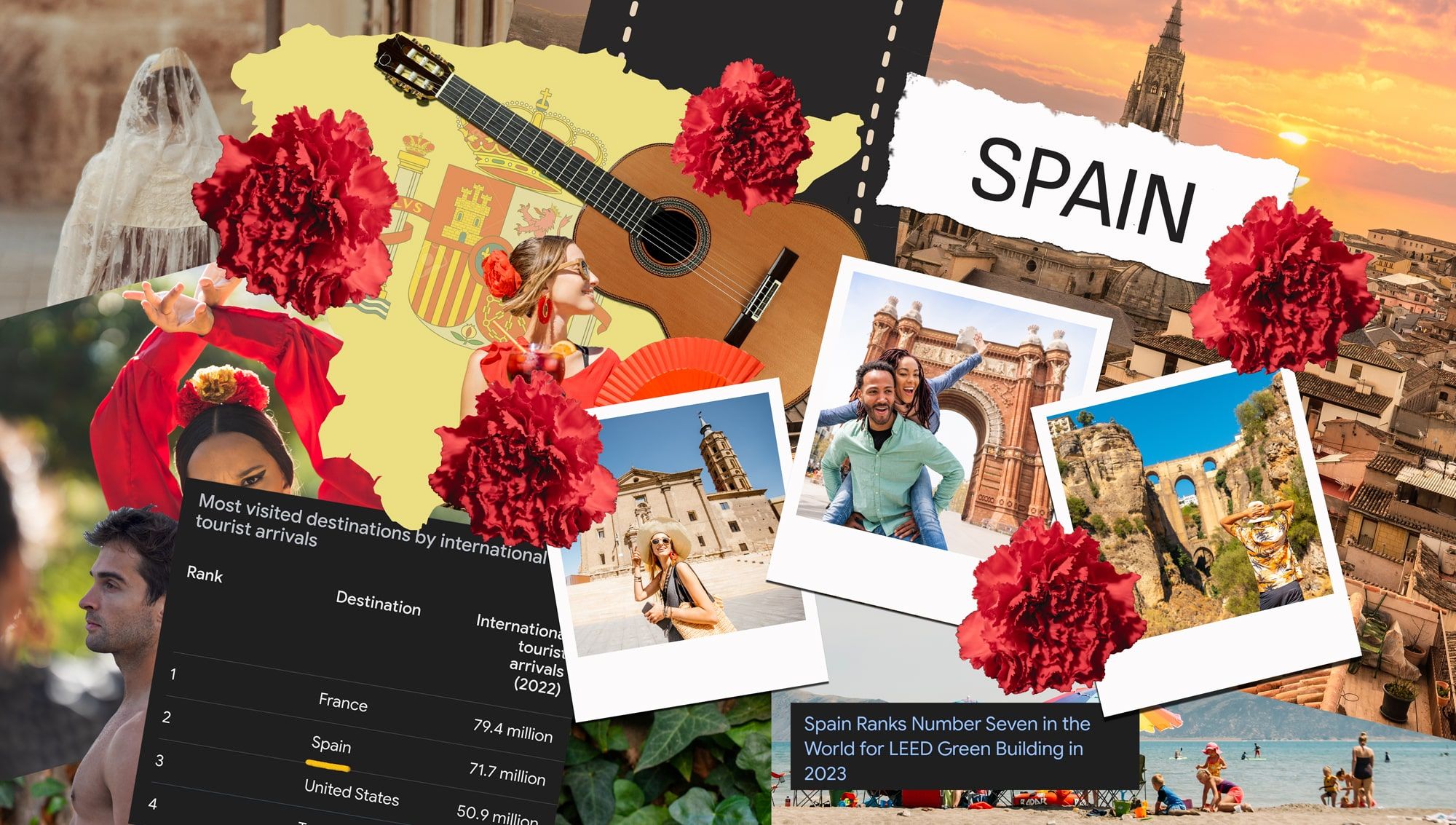
SPAIN
There are a number of countries in the world that have multiple tourist attractions because of their geographic fortunes and their rich respective histories. But, not all of them have become high performing tourist destinations. Spain is one of those that did.
Amanda Williams, a traveler writer at the helm of the website “A Dangerous Business” has travelled the nation extensively and she is well aware of its appeal.
“Spain is a country full of diverse history and culture,” she wrote in her blog. “Ancient Arabic influence can be found in the architecture of Andalusian cities like Granada and Córdoba, while Christian influence can be seen in the celebrations of Three King’s Day and Easter across the country.” She also noted the diversity of Spain’s landscape “from the wild peaks of the Pyrenees to the blue waters on the Mediterranean coast.” And she has good things to say about its cities: “like quirky and unique Barcelona to elegant and stylish Madrid.”
But it takes more than these features to be one of the most visited places on Earth. Spain is the country closely rivaling France in terms of tourism and it’s not just because of the country’s obvious features. Alongside the ornate, surface-level attractions, this country is known for people who are warm, hospitable, passionate and progressive. In the midst of ancient architecture are infrastructure upgrades and policies capable of meeting the demands of both locals and tourists alike. Meanwhile, forward-thinking policies push the country to be more capable of wooing various people—even those who feel generally unwelcome elsewhere due to their sex, sexual orientation or gender expression.
For years now, Spain’s rating in the Global Peace Index have been well beyond the upper half of the list which ranks 163 countries. This is reflected by testimonials online with a number of women travel influencers remarking on how safe the country is for solo travelers (albeit occasional warnings concerning petty crimes like theft.) Spain is also known for being a progressive country with laws and customs that respect the rights of often marginalized groups like the LGBT+. This happens even though the country has a long history with Catholicism which is known for demonizing queer people in other countries. Additionally, Spain is also recognized for its efforts concerning sustainability; this makes it attractive to travelers who are mindful of their impact on the environment.
With all these coming into play, Spain became more than a country of many attractions; it became one that appears to maximize their presence.

IRELAND
Ireland is a place of stories; it is rich in myths and folklore and people who visit it may encounter locals who have mastered the art of sharing them. But people don’t just come to Ireland for the fictitious; they also come here for the factual.
For starters, the country covers over 70,000 square kilometers and many parts of it are lush, unspoiled sceneries; these are cinematic enough to find their way to films and television programs popular around the world. Next to that, the country has a rich history remembered by medieval structures, festivals and traditions guests are invited to experience. Another attraction is the local food culture enjoyed concurrently with the country’s eager alcohol consumption. And then you have the people: the friendly and welcoming Irish who allowed their country to recently win the third spot in the 2023 Global Peace Index in Europe
“Ireland. Home to the friendliest people on the planet, full of stories and music.” This is the description of Kate McCulley, the woman behind the popular travel blog Adventurous Kate. “[It] is a great place for a solo road trip, for adventure activities, for admiring the beautiful small towns, and for getting to know the locals.”
The luck of the Irish was a phrase reportedly coined during the 1800s. It allegedly happened after a lot of Irish miners found successes during the silver and gold rush. But those years have passed. Today, much of Irish fortunes stem from the land they call home: a scenic, historically rich territory that can regale guests with stories which—in turn—can make said guests eager storytellers when they return to where they came from.
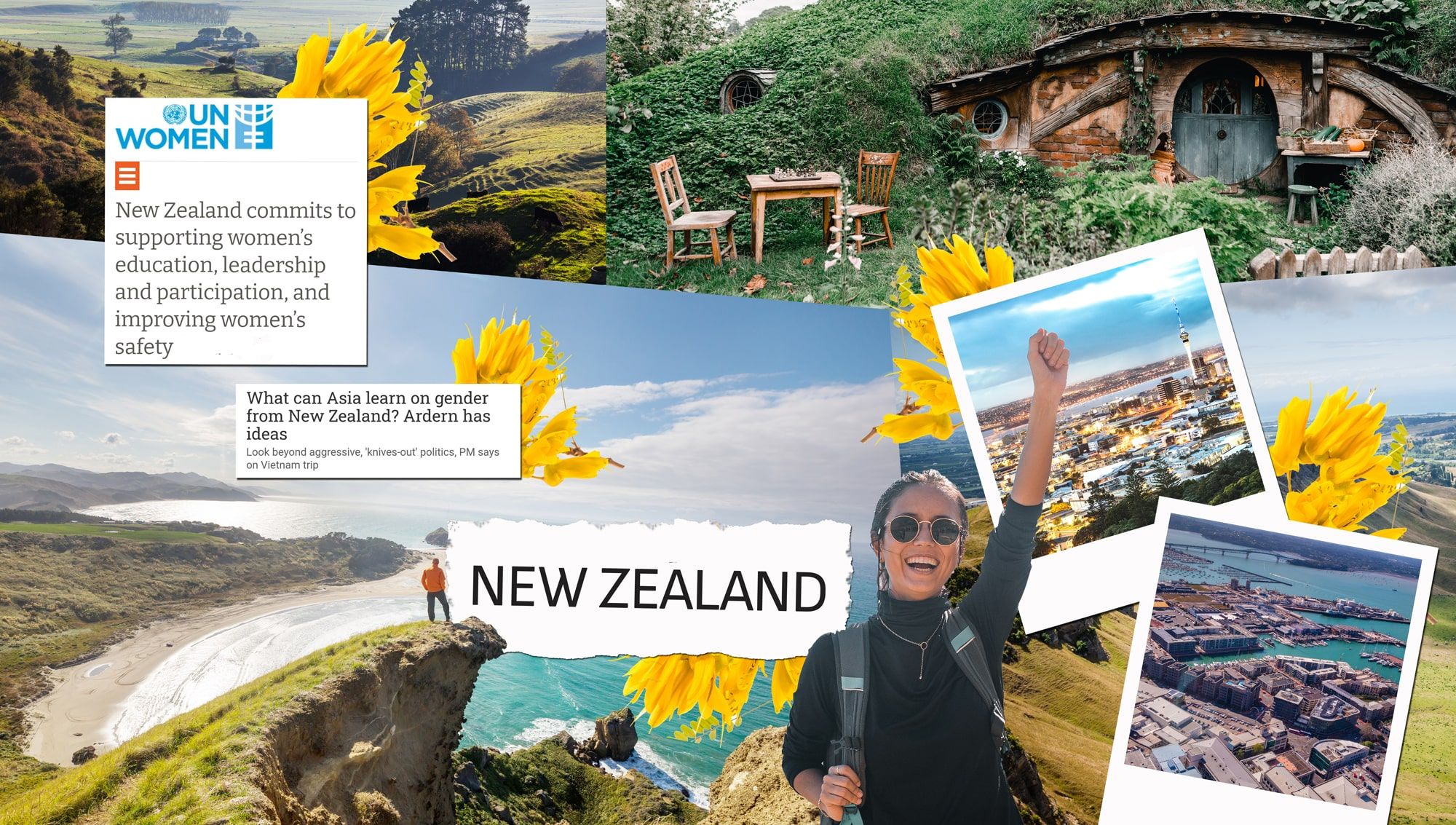
NEW ZEALAND
The COVID-19 pandemic allowed the world to realize many things and among them is just how enviable some countries can be. New Zealand is one of those nations that took the spotlight.
While other countries struggled to respond to the pandemic, this small country just East of Australia managed to face it relatively well. The virus was kept under control; its economy began recovery quickly and, while other nations were still on tight lockdowns, images from New Zealand included outdoor barbecues and other gatherings ultimately deemed safe by medical experts. There have been deaths due to COVID-19, but the double digits seen in New Zealand was quite small compared to the thousands suffered by older, wealthier nations from various parts of the world.
Some argue that New Zealand had natural advantages because it is a centrally governed, island nation with a sparse population of about 5 million at that time. But platforms like Development Asia nonetheless said that the country’s success was partly due to its tendency toward decisive, science-based governance. And, this is a quality that has benefitted it even before it came face to face with a global health crisis.
For years, the quiet nation has been steadily cementing itself as a country worth visiting. It was already at an advantage way before. Nature, after all, has blessed it with an interesting geographic profile composed of vast lush plains, snowcapped mountains, pristine waters, and volcanic plateaus. The land is so visually stunning that the people behind the popular Lord of the Rings film trilogy saw it fit to be the backdrop of JRR Tolkien’s grand fantasy series.
“It is a favorite location for solo travelers, nature enthusiasts, and adventure seekers,” said travel writer Tanya Khanijow.
“You can go long distances by driving or taking buses and trains, which are generally convenient and inexpensive.”But aside from nature, New Zealand is also blessed with nurture. Progressive ideals, science-adherence and widespread tolerance has allowed the country to be one of the most peaceful, well-developed places in the world. This is a fact widely known and it is reflected on the recent Global Peace Index which ranked it as the 4th most peaceful country in a list of 163.
The COVID-19 pandemic is more or less over; people can now travel freely. If they get the opportunity to visit New Zealand, perhaps they too can see for themselves why this country did so well at the face of a crisis.
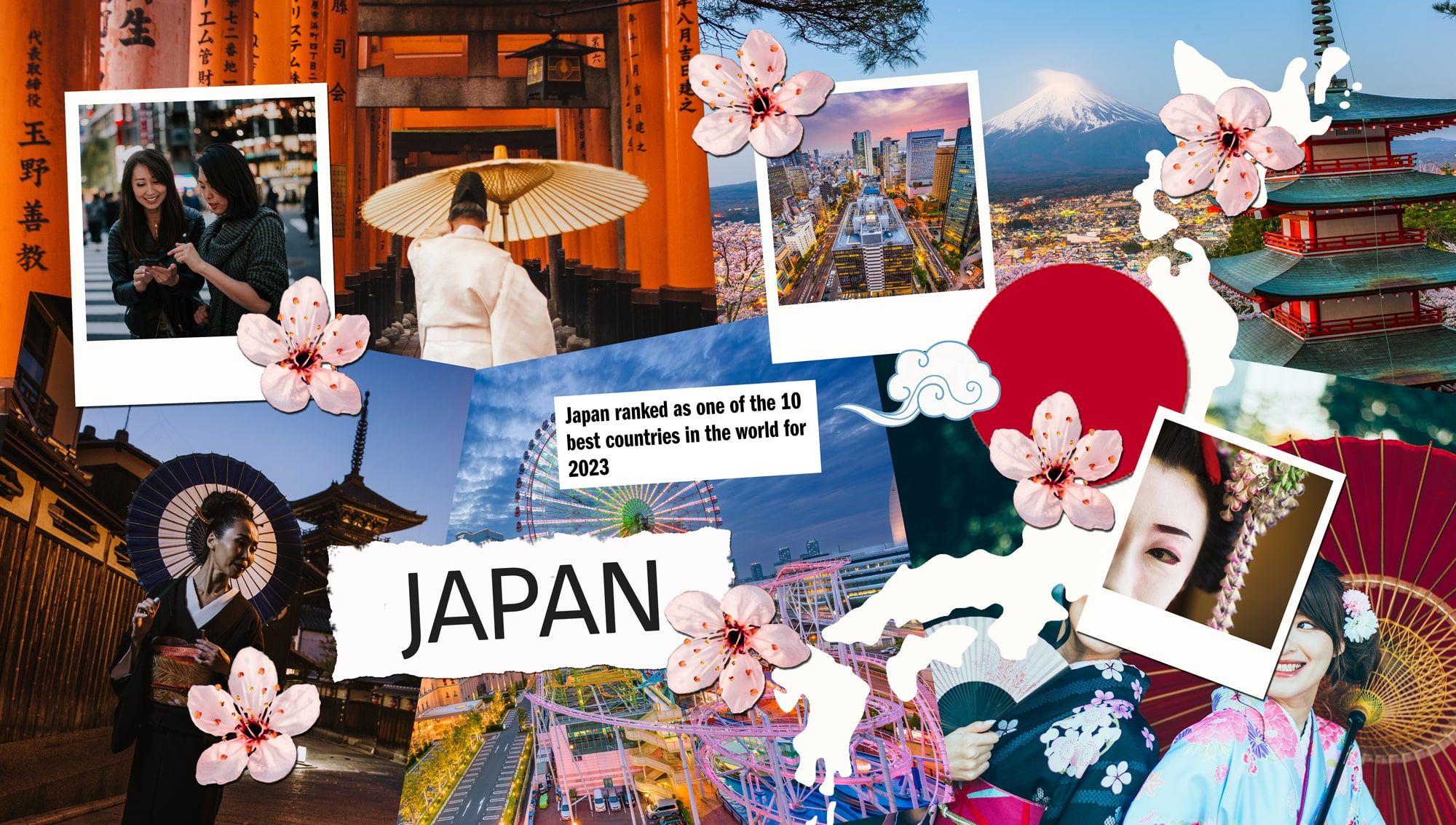
JAPAN
All over the world, yellow is a color used for that which needs to be seen.
It is a high visibility hue so it is often found on warning signs, clothes that need to catch the eye for safety reasons, and railway crossings. Irá also the color of walkable tiles--tenji blocks with with ridges capable of guiding people who have varying degrees of visual impairment. Such is a common presence in Japan--the source of such practical innovations.
As a country that does not shy away from hard work and advancement, Japan is filled with big and small features that make it an efficiently running country. These have simplified the traveling experiences of foreigners and it has allowed Japan to take advantage of the many tourist destinations within its territory.
Chief among them is Kyoto, the widely believed cultural capital of Japan—a city made visually stunning and relatively slow-paced by its painstaking preservation of ancient Japanese culture. Then there are widely advanced, fast-paced cities like Tokyo and Osaka—hotbeds of commercial activity supported by the latest innovations of the country’s brightest minds. The whole island of Hokkaido is also a popular tourist destination in Japan: a place of ski resorts, colorful fields and fresh food. Then there are the lesser known destinations that still offer a unique addition to this Asian nation’s appeal as a vacation spot.
“Japan was intended with solo travllers in mind,” said travel writer Tanya Khanijow. “The effectiveness of its transportation links is legendary, allowing travelers from all over the world to see its captivating cities and landscapes. Furthermore, Japanese people are thought to be among the nicest in the world.”
Khanijow acknowledges, however, that English isn’t a popularly spoken language in Japan. And while this can cause problems, the country as well as the various forms of technology it continues to enable, is trying to address that. This is what happens when a country is governed by the need for practical innovation.

SWITZERLAND
Europe is a continent full of places that many find enjoyable. So, if a country is to maintain a title like “the Playground of Europe,” then it must have something truly special.
This is the high standard Switzerland and its mountains continue to live up to. A favorite vacation spot of many—including members of the British royal family—Switzerland is a country known for the entertainment it provides. As a landlocked nation, it is denied of beaches that commonly attract tourists from around the world. But, what it does have are ice-crowned peaks, scenic lakes and many neighborhoods that preserve parts of its Medieval past.
Because of its geography, Switzerland is known for having many ski resorts like St. Moritz, Gstaad and Zermatt. It is also known for grand, sweeping views like the one’s provided by the Matterhorn and Mt. Rigi. Naturally, the country’s many elevated areas allow for thrill seekers to experience activities other than skiing; paragliding, for example, is also a popular activity which takes advantage of these features.
But Switzerland isn’t just for the sporty. It’s a “playground” even for those who prefer more relaxed experiences. For example, it offer tours to its old towns; boat rides, a look into its castles and various helpings of the its world famous chocolates and cheeses.
All of these attractions—daring or otherwise—are made accessible by the country’s attempts at efficiency. It’s railway in particular has received global recognition for its punctuality. It is also has an extensive network of cable cars and roads. Additionally, it is inclusive, a destination also welcoming of people who are challenged by disabilities. A lot of its areas after all are wheelchair accessible while providing activities that cater to the visually impaired, the hard of hearing and the mentally challenged.
Switzerland is also known for being safe. It has a low crime rate and a well-funded police force. It is also a known for its attempts to maintain domestic peace by focusing on the rehabilitation of offenders. Its prisons are known for being livable and humane institutions that provide education and job training for offenders to help reintegrate them into society and sway them away from future crimes. This contributes to Switzerland’s popularity.
In 2022, Travel + Leisure Asia declared the country the "perfect choice" for women travelers because of how safe it is for them. The selection was also motivated by the country’s attempt to encourage women to experience the country’s famed tourist attractions. For instance, during International Women’s Day 2021, Switzerland kick-started a campaign meant to get all-women teams to scale the peaks of the Swiss Alps. The publication said that over 700 women mountaineers from over 20 countries took part and scaled 48 peaks.
It’s been years since Switzerland was dubbed the “Playground of Europe.” And it’s a high standard the country continues to justify by making a playground enjoyable to many.
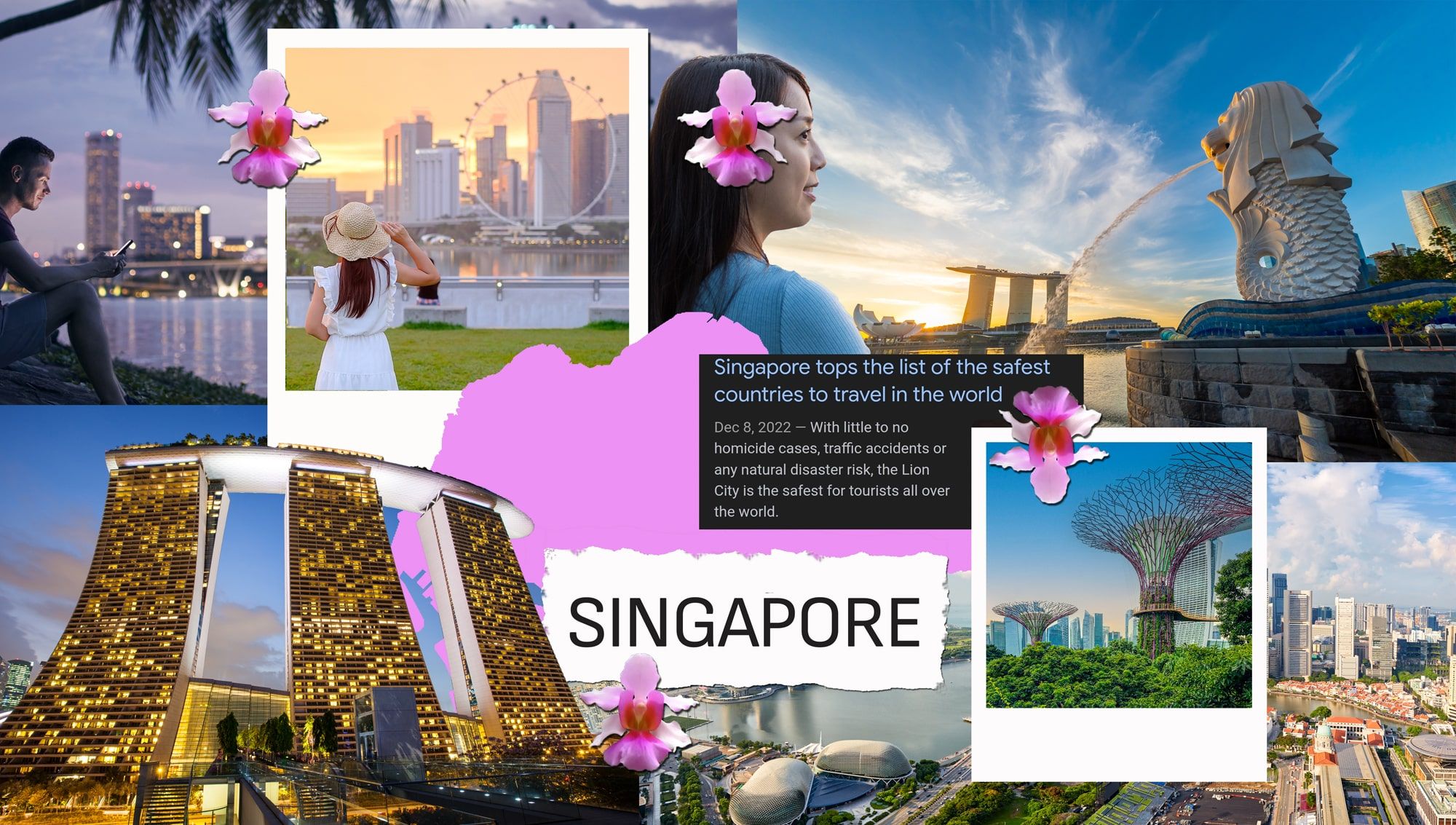
SINGAPORE
Singapore is a country so small that one can drive from Changi Airport far East and reach the opposite end of the map in less than an hour. This, at least, was according to Jaclynn Seah, a local who wrote for the Lonely Planet in an attempt to demystify her country.
She added however that in spite of its small size, Singapore is packed with attractions that can keep tourists busy so long as they known how to look. Naturally, many know of Marina Bay Sands, the resort which has fronted Singapore’s promotional materials for years. People are also generally aware of Gardens by the Bay which has a large greenhouse replicating a Mediterranean climate to grow planets not common in Southeast Asia. And of course those who have gone to the country more or less have an idea as to why Changi Airport is considered to be one of the best in the world. But beyond the popular are hidden restaurants, abandoned old structures repurposed to be the backdrop of artistic endeavors, establishments catering to specific interests and more.
Singapore is a compact treasure trove: a product adventurous minds and an economy healthy enough to support them. And it is easy to explore because of two things: efficient infrastructure and law enforcement. These days, Singapore is known for having a relatively well-planned public transportation system noted by various bodies to be among the best in the world. It is also known for having strict laws ensuring that its crime rate remains low. And this is reflected on the sentiment of people.
RunSociety is a running publication that recently did a study on 4,800 women runners. According to an article it published this year, it found that about 92% of those respondents feel safe when running and walking in Singapore at night. This is a testament to Singapore’s attempt at keeping its streets safe. Also a testament to its peacekeeping efforts is the fact that its Global Peace Index ranking increased this year; it is currently the sixth safest country out of 163 as far as the list is concerned. And that has both pros and cons.
According to Seah, there are those who might find Singapore to be too safe, “too sanitized for their liking.” But those who enjoy that sense of security may find this country worthy of a visit—especially since that security doesn’t inhibit one from pursuing the myriad of entertainment options crammed into Singapore’s tiny space.
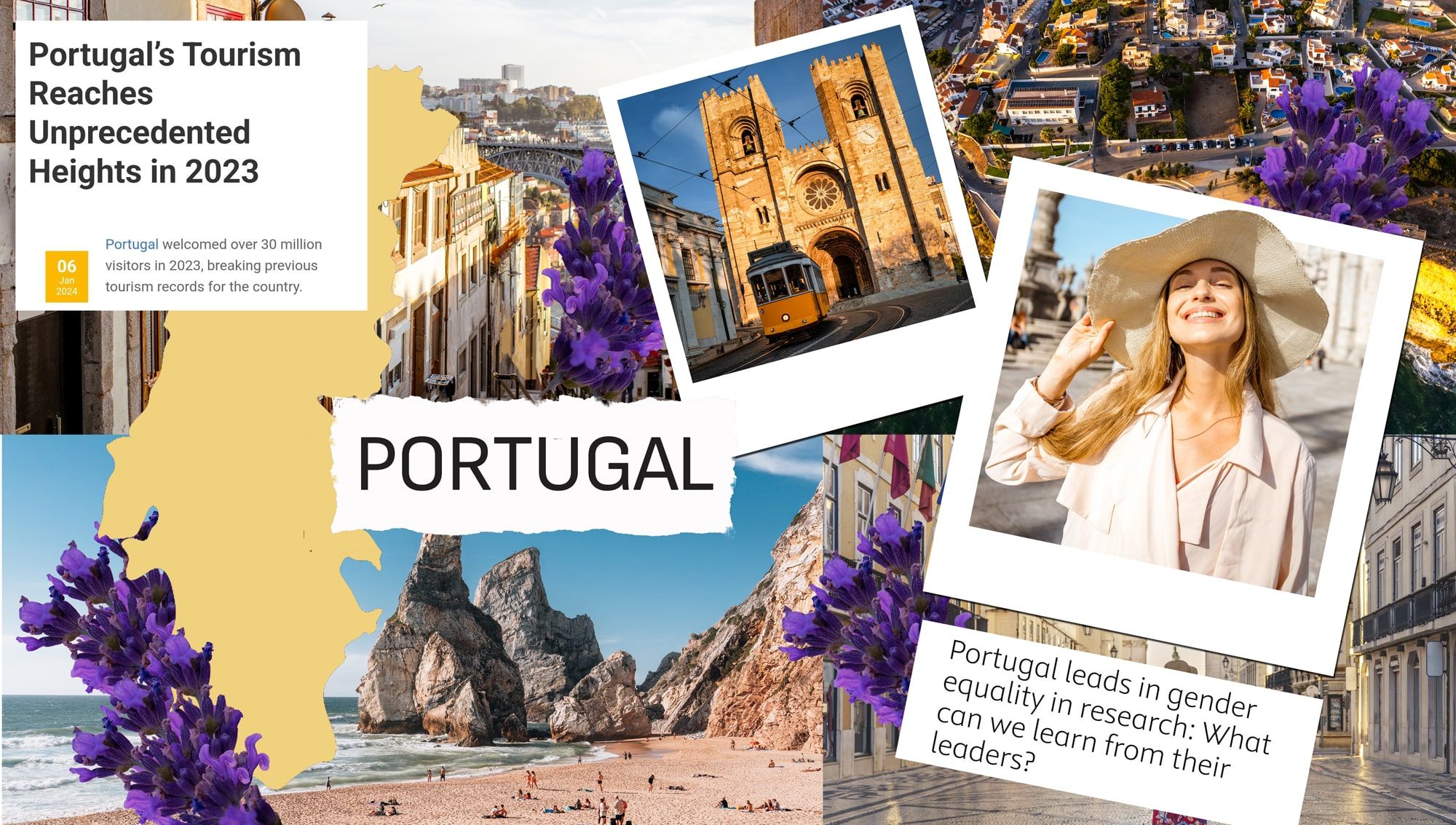
PORTUGAL
In Yorgos Lanthimos’ 2023 film “Poor Things,” Lisbon, Portugal was reimagined as a fantastical destination of colorful buildings, stunning vistas and flying trams. And if one were to make this rendition closer to reality, one would only really need to bring those trams to the ground.
Even without exaggeration, Lisbon is a place of the extraordinary. It is an old city built on a low rolling hill that stretches to the Atlantic; it is also the capital of a country motivated by forward-thinking ideals and relative open-mindedness while embracing the rich history of an ancient land. As a result, it is a colorful, tram-assisted, cobblestoned haven of tight alleys, old buildings, street art, musical expression and culinary adventures. And it is just one of the reasons to visit Portugal.
For years, this European country—sprawling beside Spain in the Iberian Peninsula—has become a popular destination for travelers around the world. Lisbon is a top priority for visitors but other areas have also been gaining much foot traffic. Up north, the municipality of Porto has also become an appealing locale—a vibrant destination of novel and charming establishments under mostly terra-cotta roofs. At the Algarve region, meanwhile, Portugal shows off its long, golden coastlines, attracting visitors that want sun, surf and sights.
In “Adventurous Kate,” writer Kate McCully takes note of some of these locations but she <added that Portugal has another appeal: “Western Europe may be expensive, but Portugal is a beautiful exception that you can enjoy on the cheap,” she said. “I personally love the yellow-and-white city of Évora and the fact that you can eat well for so cheap.”
You can also do so without feeling threatened or vastly inconvenienced. This is thanks to Portugal’s efforts to keep its tourism infrastructure up to date while keeping its crime rate low. As a result, it’s been entering several lists highlighting some of the top destinations in the world. It also recently took the 7th spot in the latest Global Peace Index
In “Poor Things,” Portugal is shown as an exciting, whimsical destination seen through the eyes of a brain transplant survivor being thrust into the many wonders of the world. It wasn’t a realistic portrayal of this European nation but given what the country currently has to offer and what people are saying about it, such an interpretation isn’t too far from the truth.
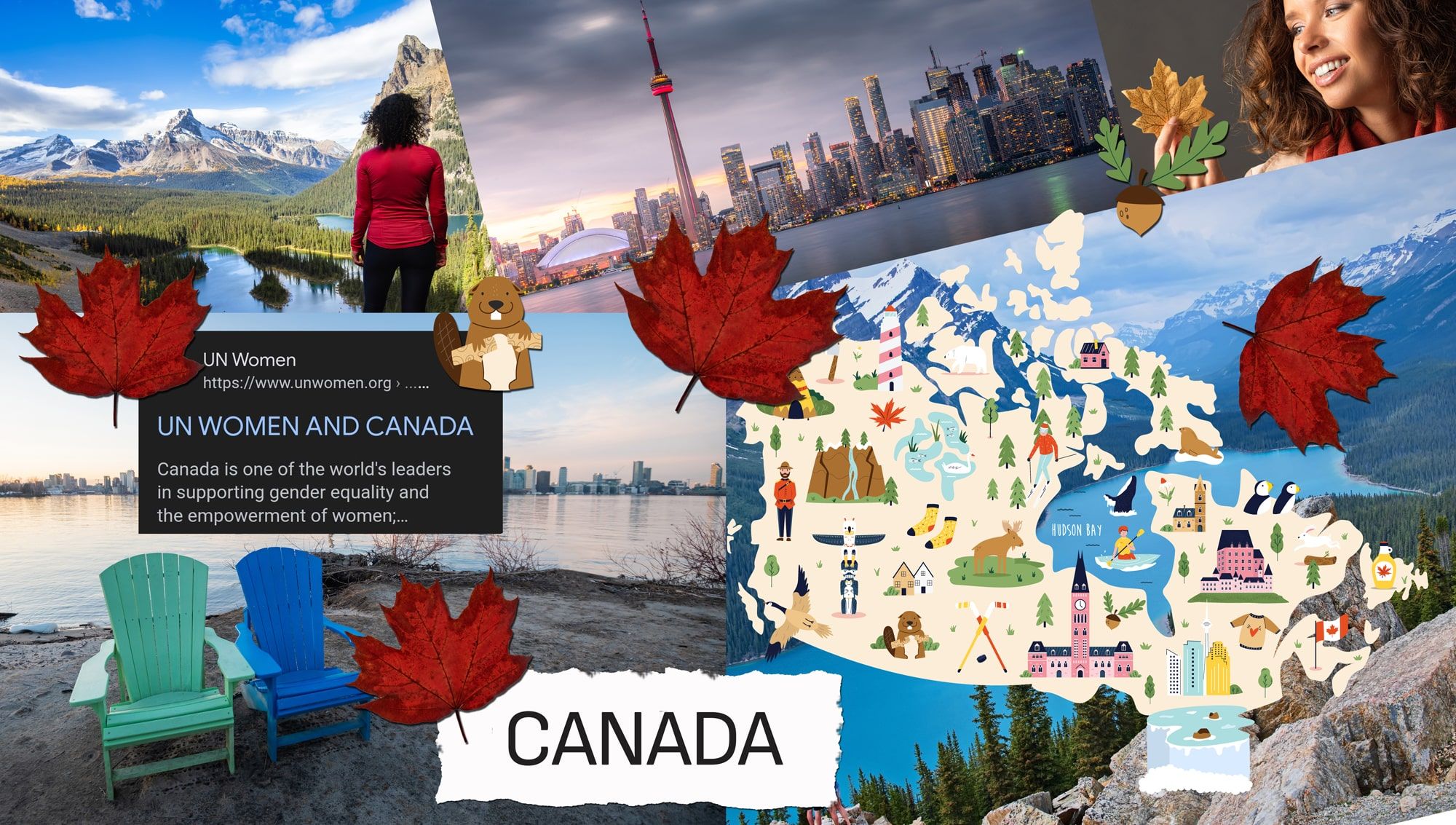
CANADA
People who grew up mostly watching American comedy shows might not have the best impression of Canada.
A character from Will & Grace said it’s like “Michigan without any culture.” In “How I Met Your Mother,” it was said that Canada’s test for citizenship is composed of only two questions; the first is “do you want to be Canadian?” and the second is “really?” Family Guy has it out for the country as well, often portraying its citizens as people who are comically too nice for their own good. As for South Park, well, a great chunk of its arsenal is bullet out for the Great White North. But to paraphrase that old meme of a response, Canadians who have their feelings hurt by these jokes can just go to the hospital. There, they can have their feelings checked for free.
All kidding aside, Canada is a country well-known for having a number of things that its richer, Southern neighbor does not. Universal healthcare is one; generally good scores in matters like domestic peace is another. And when those are mixed with solid policies and infrastructure, what one gets is a country fit to shoulder a strong influx of tourists. And they do have a lot of reasons to visit
As the second largest country in the world, Canada does have a massive territory gifted with numerous attractions. There are the classic outdoorsy destinations like the scenic Niagara Falls, Banff National Park (which is close to the popular Rocky Mountains,) the globally known winter sports venue, Whistler, and Gros Morne National Park (known for its fjords and mountains.) But Canada isn’t just made for the nature lovers. In cities like Vancouver and Toronto, there are numerous hidden gems for travelers looking for unusual experiences: great independent bands playing at lowkey venues, uniquely picturesque backdrops for social media feeds, once secret restaurants that are now the talk of foodies thanks to content hungry travel and food writers, and a long list of intimate spots that people tend to feel comfortable visiting because of Canada’s reputation
Compared to other developed countries, especially the United States, Canada is known for being a generally safe nation due to how tolerant and open-minded its population is. It also has strong gun controls (which the United States and its regular mass shootings are clearly lacking,) and good social programs that sway people away from criminality
“The country has a low crime rate, it’s easy to navigate, and you can experience a bunch of different cultures all at once,” said Kiersten Rich in her blog “The Blonde Abroad.”: “Canada is also massive, and there are tons of hiking trails and other outdoor activities for adventure junkies at the various national parks.”
For years, people have been making fun of Canada and Canadians for being too nice. But to many travelers—especially those who take trips alone—that is not a bad trait to have.
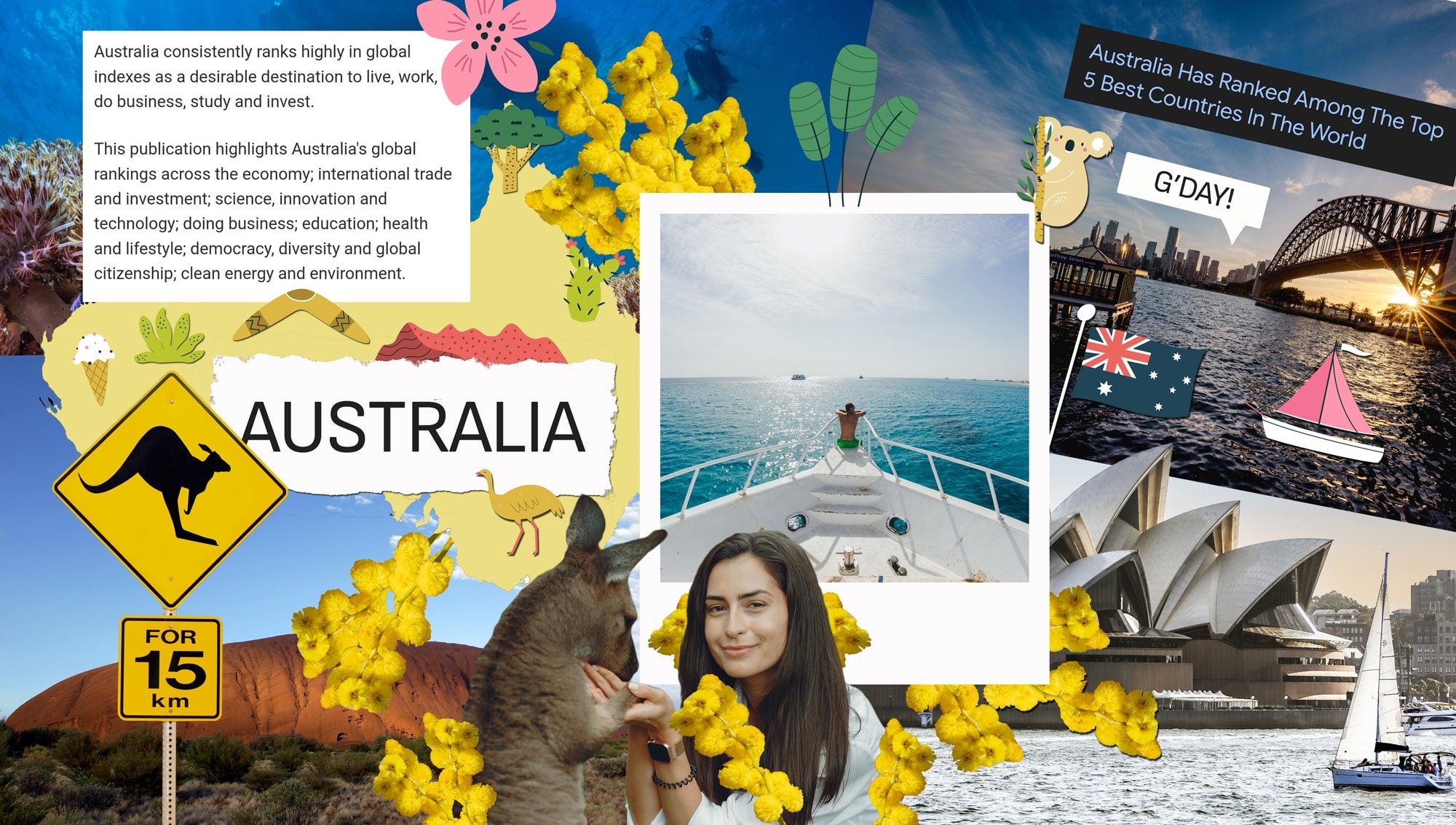
AUSTRALIA
There are people who think that Australia is a dangerous place and it’s easy to understand why.
There are a lot of animal documentaries that tend to overhype the dangers of their subjects and many of them were shot in Australia. The story of Steve Irwin was also particularly resounding turn of events. For a time; the conservationist and zookeeper was one of the most beloved Australians known worldwide and many were saddened when he passed away in his home country due to a stingray injury he incurred while filming in the Great Barrier Reef. But while it is a fact that there are potentially harmful animals living in Australia, many think that the dangers they bring are exaggerated.
Among them is Carolyn Beasley. Writing for Australia.com, these are her thoughts.
“Most of our wildlife is more scared of you than you are of it,” she said. “In fact, it’s unlikely you’ll even see a dangerous animal during your visit, unless you choose one of Australia’s amazing wildlife experiences where you’ll be accompanied by an experienced and reputable tour guide.” This of course means that a lot of the attractions that make Australia interesting are safer than sensationalists would have the world believe.
A prime example is surfing and swimming, Beasley said. There are many popular beaches in the country like “Bondi and Manly in Sydney to Cottesloe in Perth.” These areas, according to her, tend to have underwater netting or enclosures to prevent sharks and other potentially threatening marine life from coming anywhere near swimmers.
Hiking and other outdoorsy activities can also cause guests to be wary due to spiders and snakes but according to Beasley, there are only two types of dangerous spiders in Australia and the supply of anti-venom in the country has greatly minimized their dangers. For decades, Australia could even make the uncontested claim that it has had no records of deaths caused by spider bites. This started in 1979. This was only broken after a 22-year old man died in 2016 after getting bitten by a redback spider in New South Wales. As for snakes, anti-venom is also available in response to their bites and they also tend to inhabit remote parts of the country, hiding in corners; attacking only when sufficiently threatened.
This tends to be the story concerning a lot of Australia’s potentially dangerous wildlife. Many of them tend to live in far off areas leaving highly urbanized places relatively safe. And in these locations, there are also a lot of things to do.
Sydney, for example, is a highly modern city filled with entertainment centers, places for art and music and gastronomic delights. The river city of Melbourne meanwhile mixes urban indulgences with water-related attractions. And all over Australia, one may witness “mateship,” the cultural quality which is characterized by loyalty, friendship and equality. Australians in general tend to embody this idea and it has resulted in the country being one of the safest in the world for a number of people. Travel writer Kate McCulley is one of them.
“Australia is a fantastic destination for solo female travel,” she wrote in her website Adventurous Kate. “Generally speaking, Australia is a very safe country. Likely safer than your home country. The kind of country that provides healthcare to its citizens and bans the vast majority of guns after one massacre, not thousands.”
Guns and healthcare; two subjects related to man. One is provided and it causes harm; the other is withheld and it causes harm. Both relate to how humans can be some of the most dangerous animals in the world—but that’s not often the case in a country like Australia.

ICELAND
While Iceland is a country of harsh winds, rugged terrains, fiery landscapes and, cold waters, it is also one of the safest places on Earth. This is just one of the contradictions people can expect from a place called the land of “ice and fire.”
A small territory in the North Atlantic Ocean, this Nordic country—home to the descendants of fierce Vikings—has ironically created one of the most peaceful places in the world. Since the launch of the Global Peace Index back in 2008, Iceland has been at the top of the list due to its historically low crime rate, its general non-involvement in international conflict and its continuing decision to not invest heavily on militarization. Its dominance in this list continues even after 2022 when it saw its first instance of alleged terrorist activity. This event, according to Vision of Humanity, saw the arrest of men accused of conspiring to attack public officials. The men were apprehended before any attack was made. And while this incident drew concern over the rise of neo-Nazi ideology in the Nordic region, the Icelandic police, as quoted by the Guardian, asserted that their country of about 370,000 remains to be one of the safest in the world. It was not even enough to knock Iceland out of apex of the latest GPI ranking. And certain travel writers agree.
Among them is Kiersten Rich. In her popular blog “The Blonde Abroad,” she spoke highly of the country
“If there’s one country perfect for solo female travelers — it’s Iceland,” the blog shares. “The small Nordic island nation is one of the safest countries in the world, it’s easy to get around and is full of incredible adventures.”
Due to its location and the extreme natural forces that sculpted it, Iceland’s environment has been repeatedly described as otherworldly and dramatic. Here, waterfalls (like Skógafoss) rage beneath the swirling greens of the northern lights; treks across its vast lands can lead to picturesque canyons that can be rough and lush (like Fjadrargljufur) or columnar and stark (like Stuðlagil.) Lava also meets snow in this island of volcanoes and glaciers and that creates a unique sight to behold. And, it’s adventures wait for those who land in Reykjavik, the capital city known for being clean, safe, and tourist-friendly albeit being quite expensive. It is also run by progressive ideals advanced even by global standards.
In the capital, one can easily catch a glimpse of Hallgrímskirkja, the towering Lutheran church whose curving spire looks straight out of contemporary sci-fi films. It gives it a distinct facade in line with Iceland’s visual uniqueness. Adding to that is the Harpa Concert and Opera Hall whose glassy exterior accentuates the striking ways by which light touches this island nation. The country’s way of life can also be better understood by foot as one travels to the shopping streets of Austurstraeti, Bankastraeti, Laekjargata, Laugavegur and Skolavordustigur. And one can explore these areas feeling safe and secure due to the generally chill and rather peaceful demeanor of its people.
In Iceland, “Þetta reddast” is a motto popular amongst locals; it’s an optimistic saying which roughly translates to “don’t worry; it will all work out OK.” Such a mindset can be a challenge to nurture in a place that feels unsafe. That is something that Iceland usually isn’t—even in the midst of nature’s extremes
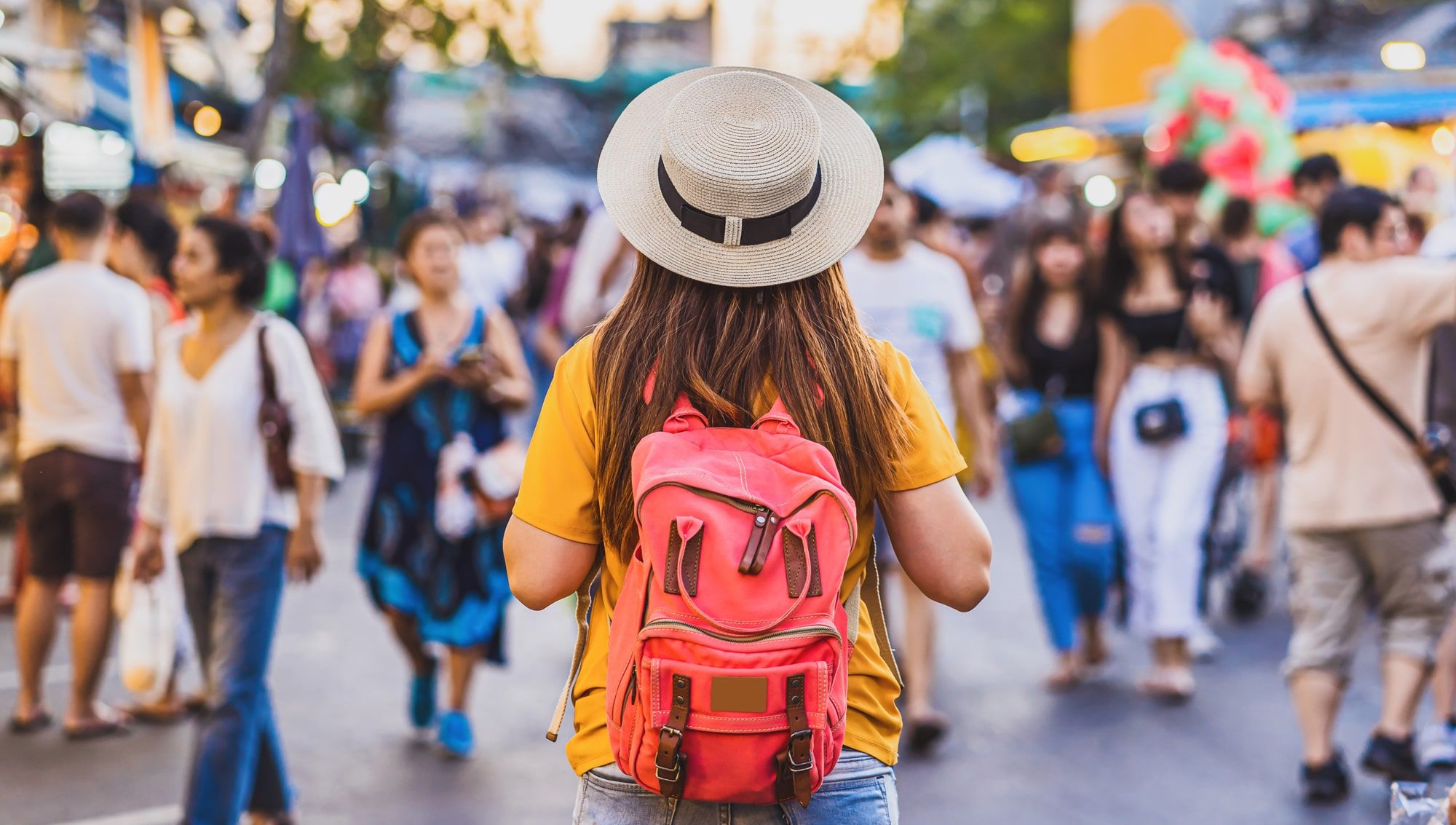
Going Solo
When women travel alone, they don’t just get a chance to know something new about the world; they also get the chance to learn something new about themselves.
This is according to a number of solo travel advocates who spoke extensively about it. Janice Waugh is one of them. Writing for Solo Traveler, she explains that it can be “life-changing.” It breaks one’s routine, boosts one’s self confidence, and helps one understand themselves better—from their strengths to their weaknesses. It can also give one the freedom to pursue self-care, she said.
But none of these negate harsh realities. According to UN Women, one out of three women worldwide still experience physical or sexual violence and this is a perception that spills over into the subject of travel. In 2021, for example, a survey conducted by JourneyWoman revealed that 88 percent of 350 women say that they have felt “somewhat threatened” or “unsafe” while travelling. Meanwhile, a global survey commissioned by World Travel Protection last year also revealed that more than seven in 10 women feel less safe when traveling for work. Nevertheless, women have continued to travel alone; some have returned with scars both physical and psychological; some have returned with a wallet much thinner than they anticipated and some bring home cautionary tales. But there are also those who have returned triumphant; they feel empowered, independent and refreshed. They’ve found a place that was right for them and they express their feelings on Instagram posts, Youtube content, TikTok videos and blogs. Not surprisingly, many of such testimonials happened because they visited the 10 notable countries listed above.
Iceland is an adequate example. For years, this chill, Nordic getaway has been a consistent presence in lists ranking preferred destinations and it continues to hold this spot by being generally considered both stunning and safe. Nevertheless, it is also known for its downsides. Chief among them is the country’s high cost of living—a product of its reality as an isolated nation with a small market and a heavy reliance on imported goods. According to Trip.com, budget travelers can expect to spend a minimum of $100 per day in Iceland. That estimate is not far from the figure various travel writers suggested. And many of them make sure to mention it whenever they make guides about the country.
Still, whenever resources related to travel recommend a destination for women, Iceland is a common pick. And, it’s partly because, in spite of all its drawbacks, there are places in the world that can be so much worse.
t may be 2024 but there are still a number of destinations that remain exceptionally challenging if not dangerous for women. Just this year, a couple—both travel bloggers—went on Instagram to say that they were attacked. It supposedly happened in the Dumki district of Jharkhand, India. The husband was allegedly beaten up, the wife was said to have been raped by seven men, and the incident sparked yet another protest from locals demanding their government to develop more effective measures against sexual violence in their country
About a month earlier, meanwhile, two American women who stopped over at the Bahamas were reportedly drugged at one of its resorts and were sexually assaulted. This comes as the US State Department issued a level two travel advisory for the Bahamas because of homicides and sexual violence.
These are just two of the many instances that continue to inspire fear in women who travel. They also exemplify the types of the dangers travelers—specifically women—can be subjected to. But there are areas, where these are less likely to happen. In some of them, various measures are implemented to keep crime rates low; infrastructures relevant to tourism also continue to be updated to minimize stressors in travel, and, the public receives enough support from the government to uphold non-hostile environments. As a result, they’ve cemented their reputations as countries not just fit for women but also for women who travel alone.
They all have flaws but not enough of them to completely turn off travelers. As a result, people visited, returned, told their stories and, ultimately, determined the contents of this list.

SPAIN
There are a number of countries in the world that have multiple tourist attractions because of their geographic fortunes and their rich respective histories. But, not all of them have become high performing tourist destinations. Spain is one of those that did.
Amanda Williams, a traveler writer at the helm of the website “A Dangerous Business” has travelled the nation extensively and she is well aware of its appeal.
“Spain is a country full of diverse history and culture,” she wrote in her blog. “Ancient Arabic influence can be found in the architecture of Andalusian cities like Granada and Córdoba, while Christian influence can be seen in the celebrations of Three King’s Day and Easter across the country.” She also noted the diversity of Spain’s landscape “from the wild peaks of the Pyrenees to the blue waters on the Mediterranean coast.” And she has good things to say about its cities: “like quirky and unique Barcelona to elegant and stylish Madrid.”
But it takes more than these features to be one of the most visited places on Earth. Spain is the country closely rivaling France in terms of tourism and it’s not just because of the country’s obvious features. Alongside the ornate, surface-level attractions, this country is known for people who are warm, hospitable, passionate and progressive. In the midst of ancient architecture are infrastructure upgrades and policies capable of meeting the demands of both locals and tourists alike. Meanwhile, forward-thinking policies push the country to be more capable of wooing various people—even those who feel generally unwelcome elsewhere due to their sex, sexual orientation or gender expression.
For years now, Spain’s rating in the Global Peace Index have been well beyond the upper half of the list which ranks 163 countries. This is reflected by testimonials online with a number of women travel influencers remarking on how safe the country is for solo travelers (albeit occasional warnings concerning petty crimes like theft.) Spain is also known for being a progressive country with laws and customs that respect the rights of often marginalized groups like the LGBT+. This happens even though the country has a long history with Catholicism which is known for demonizing queer people in other countries. Additionally, Spain is also recognized for its efforts concerning sustainability; this makes it attractive to travelers who are mindful of their impact on the environment.
With all these coming into play, Spain became more than a country of many attractions; it became one that appears to maximize their presence.

IRELAND
Ireland is a place of stories; it is rich in myths and folklore and people who visit it may encounter locals who have mastered the art of sharing them. But people don’t just come to Ireland for the fictitious; they also come here for the factual.
For starters, the country covers over 70,000 square kilometers and many parts of it are lush, unspoiled sceneries; these are cinematic enough to find their way to films and television programs popular around the world. Next to that, the country has a rich history remembered by medieval structures, festivals and traditions guests are invited to experience. Another attraction is the local food culture enjoyed concurrently with the country’s eager alcohol consumption. And then you have the people: the friendly and welcoming Irish who allowed their country to recently win the third spot in the 2023 Global Peace Index in Europe
“Ireland. Home to the friendliest people on the planet, full of stories and music.” This is the description of Kate McCulley, the woman behind the popular travel blog Adventurous Kate. “[It] is a great place for a solo road trip, for adventure activities, for admiring the beautiful small towns, and for getting to know the locals.”
The luck of the Irish was a phrase reportedly coined during the 1800s. It allegedly happened after a lot of Irish miners found successes during the silver and gold rush. But those years have passed. Today, much of Irish fortunes stem from the land they call home: a scenic, historically rich territory that can regale guests with stories which—in turn—can make said guests eager storytellers when they return to where they came from.

NEW ZEALAND
The COVID-19 pandemic allowed the world to realize many things and among them is just how enviable some countries can be. New Zealand is one of those nations that took the spotlight.
While other countries struggled to respond to the pandemic, this small country just East of Australia managed to face it relatively well. The virus was kept under control; its economy began recovery quickly and, while other nations were still on tight lockdowns, images from New Zealand included outdoor barbecues and other gatherings ultimately deemed safe by medical experts. There have been deaths due to COVID-19, but the double digits seen in New Zealand was quite small compared to the thousands suffered by older, wealthier nations from various parts of the world.
Some argue that New Zealand had natural advantages because it is a centrally governed, island nation with a sparse population of about 5 million at that time. But platforms like Development Asia nonetheless said that the country’s success was partly due to its tendency toward decisive, science-based governance. And, this is a quality that has benefitted it even before it came face to face with a global health crisis.
For years, the quiet nation has been steadily cementing itself as a country worth visiting. It was already at an advantage way before. Nature, after all, has blessed it with an interesting geographic profile composed of vast lush plains, snowcapped mountains, pristine waters, and volcanic plateaus. The land is so visually stunning that the people behind the popular Lord of the Rings film trilogy saw it fit to be the backdrop of JRR Tolkien’s grand fantasy series.
“It is a favorite location for solo travelers, nature enthusiasts, and adventure seekers,” said travel writer Tanya Khanijow.
“You can go long distances by driving or taking buses and trains, which are generally convenient and inexpensive.”But aside from nature, New Zealand is also blessed with nurture. Progressive ideals, science-adherence and widespread tolerance has allowed the country to be one of the most peaceful, well-developed places in the world. This is a fact widely known and it is reflected on the recent Global Peace Index which ranked it as the 4th most peaceful country in a list of 163.
The COVID-19 pandemic is more or less over; people can now travel freely. If they get the opportunity to visit New Zealand, perhaps they too can see for themselves why this country did so well at the face of a crisis.

JAPAN
All over the world, yellow is a color used for that which needs to be seen.
It is a high visibility hue so it is often found on warning signs, clothes that need to catch the eye for safety reasons, and railway crossings. Irá also the color of walkable tiles--tenji blocks with with ridges capable of guiding people who have varying degrees of visual impairment. Such is a common presence in Japan--the source of such practical innovations.
As a country that does not shy away from hard work and advancement, Japan is filled with big and small features that make it an efficiently running country. These have simplified the traveling experiences of foreigners and it has allowed Japan to take advantage of the many tourist destinations within its territory.
Chief among them is Kyoto, the widely believed cultural capital of Japan—a city made visually stunning and relatively slow-paced by its painstaking preservation of ancient Japanese culture. Then there are widely advanced, fast-paced cities like Tokyo and Osaka—hotbeds of commercial activity supported by the latest innovations of the country’s brightest minds. The whole island of Hokkaido is also a popular tourist destination in Japan: a place of ski resorts, colorful fields and fresh food. Then there are the lesser known destinations that still offer a unique addition to this Asian nation’s appeal as a vacation spot.
“Japan was intended with solo travllers in mind,” said travel writer Tanya Khanijow. “The effectiveness of its transportation links is legendary, allowing travelers from all over the world to see its captivating cities and landscapes. Furthermore, Japanese people are thought to be among the nicest in the world.”
Khanijow acknowledges, however, that English isn’t a popularly spoken language in Japan. And while this can cause problems, the country as well as the various forms of technology it continues to enable, is trying to address that. This is what happens when a country is governed by the need for practical innovation.

SWITZERLAND
Europe is a continent full of places that many find enjoyable. So, if a country is to maintain a title like “the Playground of Europe,” then it must have something truly special.
This is the high standard Switzerland and its mountains continue to live up to. A favorite vacation spot of many—including members of the British royal family—Switzerland is a country known for the entertainment it provides. As a landlocked nation, it is denied of beaches that commonly attract tourists from around the world. But, what it does have are ice-crowned peaks, scenic lakes and many neighborhoods that preserve parts of its Medieval past.
Because of its geography, Switzerland is known for having many ski resorts like St. Moritz, Gstaad and Zermatt. It is also known for grand, sweeping views like the one’s provided by the Matterhorn and Mt. Rigi. Naturally, the country’s many elevated areas allow for thrill seekers to experience activities other than skiing; paragliding, for example, is also a popular activity which takes advantage of these features.
But Switzerland isn’t just for the sporty. It’s a “playground” even for those who prefer more relaxed experiences. For example, it offer tours to its old towns; boat rides, a look into its castles and various helpings of the its world famous chocolates and cheeses.
All of these attractions—daring or otherwise—are made accessible by the country’s attempts at efficiency. It’s railway in particular has received global recognition for its punctuality. It is also has an extensive network of cable cars and roads. Additionally, it is inclusive, a destination also welcoming of people who are challenged by disabilities. A lot of its areas after all are wheelchair accessible while providing activities that cater to the visually impaired, the hard of hearing and the mentally challenged.
Switzerland is also known for being safe. It has a low crime rate and a well-funded police force. It is also a known for its attempts to maintain domestic peace by focusing on the rehabilitation of offenders. Its prisons are known for being livable and humane institutions that provide education and job training for offenders to help reintegrate them into society and sway them away from future crimes. This contributes to Switzerland’s popularity.
In 2022, Travel + Leisure Asia declared the country the "perfect choice" for women travelers because of how safe it is for them. The selection was also motivated by the country’s attempt to encourage women to experience the country’s famed tourist attractions. For instance, during International Women’s Day 2021, Switzerland kick-started a campaign meant to get all-women teams to scale the peaks of the Swiss Alps. The publication said that over 700 women mountaineers from over 20 countries took part and scaled 48 peaks.
It’s been years since Switzerland was dubbed the “Playground of Europe.” And it’s a high standard the country continues to justify by making a playground enjoyable to many.

SINGAPORE
Singapore is a country so small that one can drive from Changi Airport far East and reach the opposite end of the map in less than an hour. This, at least, was according to Jaclynn Seah, a local who wrote for the Lonely Planet in an attempt to demystify her country.
She added however that in spite of its small size, Singapore is packed with attractions that can keep tourists busy so long as they known how to look. Naturally, many know of Marina Bay Sands, the resort which has fronted Singapore’s promotional materials for years. People are also generally aware of Gardens by the Bay which has a large greenhouse replicating a Mediterranean climate to grow planets not common in Southeast Asia. And of course those who have gone to the country more or less have an idea as to why Changi Airport is considered to be one of the best in the world. But beyond the popular are hidden restaurants, abandoned old structures repurposed to be the backdrop of artistic endeavors, establishments catering to specific interests and more.
Singapore is a compact treasure trove: a product adventurous minds and an economy healthy enough to support them. And it is easy to explore because of two things: efficient infrastructure and law enforcement. These days, Singapore is known for having a relatively well-planned public transportation system noted by various bodies to be among the best in the world. It is also known for having strict laws ensuring that its crime rate remains low. And this is reflected on the sentiment of people.
RunSociety is a running publication that recently did a study on 4,800 women runners. According to an article it published this year, it found that about 92% of those respondents feel safe when running and walking in Singapore at night. This is a testament to Singapore’s attempt at keeping its streets safe. Also a testament to its peacekeeping efforts is the fact that its Global Peace Index ranking increased this year; it is currently the sixth safest country out of 163 as far as the list is concerned. And that has both pros and cons.
According to Seah, there are those who might find Singapore to be too safe, “too sanitized for their liking.” But those who enjoy that sense of security may find this country worthy of a visit—especially since that security doesn’t inhibit one from pursuing the myriad of entertainment options crammed into Singapore’s tiny space.

PORTUGAL
In Yorgos Lanthimos’ 2023 film “Poor Things,” Lisbon, Portugal was reimagined as a fantastical destination of colorful buildings, stunning vistas and flying trams. And if one were to make this rendition closer to reality, one would only really need to bring those trams to the ground.
Even without exaggeration, Lisbon is a place of the extraordinary. It is an old city built on a low rolling hill that stretches to the Atlantic; it is also the capital of a country motivated by forward-thinking ideals and relative open-mindedness while embracing the rich history of an ancient land. As a result, it is a colorful, tram-assisted, cobblestoned haven of tight alleys, old buildings, street art, musical expression and culinary adventures. And it is just one of the reasons to visit Portugal.
For years, this European country—sprawling beside Spain in the Iberian Peninsula—has become a popular destination for travelers around the world. Lisbon is a top priority for visitors but other areas have also been gaining much foot traffic. Up north, the municipality of Porto has also become an appealing locale—a vibrant destination of novel and charming establishments under mostly terra-cotta roofs. At the Algarve region, meanwhile, Portugal shows off its long, golden coastlines, attracting visitors that want sun, surf and sights.
In “Adventurous Kate,” writer Kate McCully takes note of some of these locations but she <added that Portugal has another appeal: “Western Europe may be expensive, but Portugal is a beautiful exception that you can enjoy on the cheap,” she said. “I personally love the yellow-and-white city of Évora and the fact that you can eat well for so cheap.”
You can also do so without feeling threatened or vastly inconvenienced. This is thanks to Portugal’s efforts to keep its tourism infrastructure up to date while keeping its crime rate low. As a result, it’s been entering several lists highlighting some of the top destinations in the world. It also recently took the 7th spot in the latest Global Peace Index
In “Poor Things,” Portugal is shown as an exciting, whimsical destination seen through the eyes of a brain transplant survivor being thrust into the many wonders of the world. It wasn’t a realistic portrayal of this European nation but given what the country currently has to offer and what people are saying about it, such an interpretation isn’t too far from the truth.

CANADA
People who grew up mostly watching American comedy shows might not have the best impression of Canada.
A character from Will & Grace said it’s like “Michigan without any culture.” In “How I Met Your Mother,” it was said that Canada’s test for citizenship is composed of only two questions; the first is “do you want to be Canadian?” and the second is “really?” Family Guy has it out for the country as well, often portraying its citizens as people who are comically too nice for their own good. As for South Park, well, a great chunk of its arsenal is bullet out for the Great White North. But to paraphrase that old meme of a response, Canadians who have their feelings hurt by these jokes can just go to the hospital. There, they can have their feelings checked for free.
All kidding aside, Canada is a country well-known for having a number of things that its richer, Southern neighbor does not. Universal healthcare is one; generally good scores in matters like domestic peace is another. And when those are mixed with solid policies and infrastructure, what one gets is a country fit to shoulder a strong influx of tourists. And they do have a lot of reasons to visit
As the second largest country in the world, Canada does have a massive territory gifted with numerous attractions. There are the classic outdoorsy destinations like the scenic Niagara Falls, Banff National Park (which is close to the popular Rocky Mountains,) the globally known winter sports venue, Whistler, and Gros Morne National Park (known for its fjords and mountains.) But Canada isn’t just made for the nature lovers. In cities like Vancouver and Toronto, there are numerous hidden gems for travelers looking for unusual experiences: great independent bands playing at lowkey venues, uniquely picturesque backdrops for social media feeds, once secret restaurants that are now the talk of foodies thanks to content hungry travel and food writers, and a long list of intimate spots that people tend to feel comfortable visiting because of Canada’s reputation
Compared to other developed countries, especially the United States, Canada is known for being a generally safe nation due to how tolerant and open-minded its population is. It also has strong gun controls (which the United States and its regular mass shootings are clearly lacking,) and good social programs that sway people away from criminality
“The country has a low crime rate, it’s easy to navigate, and you can experience a bunch of different cultures all at once,” said Kiersten Rich in her blog “The Blonde Abroad.”: “Canada is also massive, and there are tons of hiking trails and other outdoor activities for adventure junkies at the various national parks.”
For years, people have been making fun of Canada and Canadians for being too nice. But to many travelers—especially those who take trips alone—that is not a bad trait to have.

AUSTRALIA
There are people who think that Australia is a dangerous place and it’s easy to understand why.
There are a lot of animal documentaries that tend to overhype the dangers of their subjects and many of them were shot in Australia. The story of Steve Irwin was also particularly resounding turn of events. For a time; the conservationist and zookeeper was one of the most beloved Australians known worldwide and many were saddened when he passed away in his home country due to a stingray injury he incurred while filming in the Great Barrier Reef. But while it is a fact that there are potentially harmful animals living in Australia, many think that the dangers they bring are exaggerated.
Among them is Carolyn Beasley. Writing for Australia.com, these are her thoughts.
“Most of our wildlife is more scared of you than you are of it,” she said. “In fact, it’s unlikely you’ll even see a dangerous animal during your visit, unless you choose one of Australia’s amazing wildlife experiences where you’ll be accompanied by an experienced and reputable tour guide.” This of course means that a lot of the attractions that make Australia interesting are safer than sensationalists would have the world believe.
A prime example is surfing and swimming, Beasley said. There are many popular beaches in the country like “Bondi and Manly in Sydney to Cottesloe in Perth.” These areas, according to her, tend to have underwater netting or enclosures to prevent sharks and other potentially threatening marine life from coming anywhere near swimmers.
Hiking and other outdoorsy activities can also cause guests to be wary due to spiders and snakes but according to Beasley, there are only two types of dangerous spiders in Australia and the supply of anti-venom in the country has greatly minimized their dangers. For decades, Australia could even make the uncontested claim that it has had no records of deaths caused by spider bites. This started in 1979. This was only broken after a 22-year old man died in 2016 after getting bitten by a redback spider in New South Wales. As for snakes, anti-venom is also available in response to their bites and they also tend to inhabit remote parts of the country, hiding in corners; attacking only when sufficiently threatened.
This tends to be the story concerning a lot of Australia’s potentially dangerous wildlife. Many of them tend to live in far off areas leaving highly urbanized places relatively safe. And in these locations, there are also a lot of things to do.
Sydney, for example, is a highly modern city filled with entertainment centers, places for art and music and gastronomic delights. The river city of Melbourne meanwhile mixes urban indulgences with water-related attractions. And all over Australia, one may witness “mateship,” the cultural quality which is characterized by loyalty, friendship and equality. Australians in general tend to embody this idea and it has resulted in the country being one of the safest in the world for a number of people. Travel writer Kate McCulley is one of them.
“Australia is a fantastic destination for solo female travel,” she wrote in her website Adventurous Kate. “Generally speaking, Australia is a very safe country. Likely safer than your home country. The kind of country that provides healthcare to its citizens and bans the vast majority of guns after one massacre, not thousands.”
Guns and healthcare; two subjects related to man. One is provided and it causes harm; the other is withheld and it causes harm. Both relate to how humans can be some of the most dangerous animals in the world—but that’s not often the case in a country like Australia.

ICELAND
While Iceland is a country of harsh winds, rugged terrains, fiery landscapes and, cold waters, it is also one of the safest places on Earth. This is just one of the contradictions people can expect from a place called the land of “ice and fire.”
A small territory in the North Atlantic Ocean, this Nordic country—home to the descendants of fierce Vikings—has ironically created one of the most peaceful places in the world. Since the launch of the Global Peace Index back in 2008, Iceland has been at the top of the list due to its historically low crime rate, its general non-involvement in international conflict and its continuing decision to not invest heavily on militarization. Its dominance in this list continues even after 2022 when it saw its first instance of alleged terrorist activity. This event, according to Vision of Humanity, saw the arrest of men accused of conspiring to attack public officials. The men were apprehended before any attack was made. And while this incident drew concern over the rise of neo-Nazi ideology in the Nordic region, the Icelandic police, as quoted by the Guardian, asserted that their country of about 370,000 remains to be one of the safest in the world. It was not even enough to knock Iceland out of apex of the latest GPI ranking. And certain travel writers agree.
Among them is Kiersten Rich. In her popular blog “The Blonde Abroad,” she spoke highly of the country
“If there’s one country perfect for solo female travelers — it’s Iceland,” the blog shares. “The small Nordic island nation is one of the safest countries in the world, it’s easy to get around and is full of incredible adventures.”
Due to its location and the extreme natural forces that sculpted it, Iceland’s environment has been repeatedly described as otherworldly and dramatic. Here, waterfalls (like Skógafoss) rage beneath the swirling greens of the northern lights; treks across its vast lands can lead to picturesque canyons that can be rough and lush (like Fjadrargljufur) or columnar and stark (like Stuðlagil.) Lava also meets snow in this island of volcanoes and glaciers and that creates a unique sight to behold. And, it’s adventures wait for those who land in Reykjavik, the capital city known for being clean, safe, and tourist-friendly albeit being quite expensive. It is also run by progressive ideals advanced even by global standards.
In the capital, one can easily catch a glimpse of Hallgrímskirkja, the towering Lutheran church whose curving spire looks straight out of contemporary sci-fi films. It gives it a distinct facade in line with Iceland’s visual uniqueness. Adding to that is the Harpa Concert and Opera Hall whose glassy exterior accentuates the striking ways by which light touches this island nation. The country’s way of life can also be better understood by foot as one travels to the shopping streets of Austurstraeti, Bankastraeti, Laekjargata, Laugavegur and Skolavordustigur. And one can explore these areas feeling safe and secure due to the generally chill and rather peaceful demeanor of its people.
In Iceland, “Þetta reddast” is a motto popular amongst locals; it’s an optimistic saying which roughly translates to “don’t worry; it will all work out OK.” Such a mindset can be a challenge to nurture in a place that feels unsafe. That is something that Iceland usually isn’t—even in the midst of nature’s extremes

Going Solo
When women travel alone, they don’t just get a chance to know something new about the world; they also get the chance to learn something new about themselves.
This is according to a number of solo travel advocates who spoke extensively about it. Janice Waugh is one of them. Writing for Solo Traveler, she explains that it can be “life-changing.” It breaks one’s routine, boosts one’s self confidence, and helps one understand themselves better—from their strengths to their weaknesses. It can also give one the freedom to pursue self-care, she said.
But none of these negate harsh realities. According to UN Women, one out of three women worldwide still experience physical or sexual violence and this is a perception that spills over into the subject of travel. In 2021, for example, a survey conducted by JourneyWoman revealed that 88 percent of 350 women say that they have felt “somewhat threatened” or “unsafe” while travelling. Meanwhile, a global survey commissioned by World Travel Protection last year also revealed that more than seven in 10 women feel less safe when traveling for work. Nevertheless, women have continued to travel alone; some have returned with scars both physical and psychological; some have returned with a wallet much thinner than they anticipated and some bring home cautionary tales. But there are also those who have returned triumphant; they feel empowered, independent and refreshed. They’ve found a place that was right for them and they express their feelings on Instagram posts, Youtube content, TikTok videos and blogs. Not surprisingly, many of such testimonials happened because they visited the 10 notable countries listed above.


